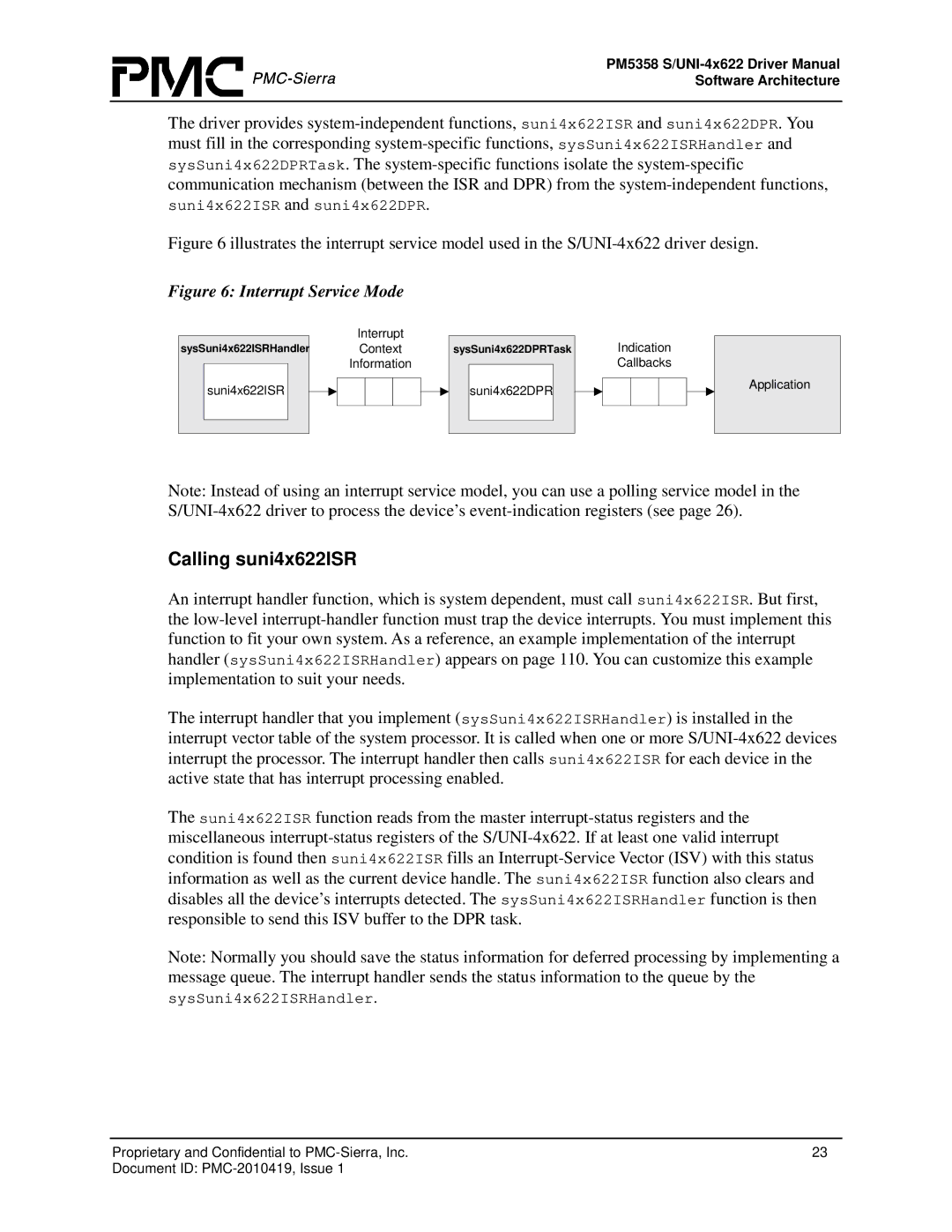
PM5358
Software Architecture
The driver provides
suni4x622ISR and suni4x622DPR.
Figure 6 illustrates the interrupt service model used in the S/UNI-4x622 driver design.
Figure 6: Interrupt Service Mode
Interrupt
sysSuni4x622ISRHandler Context Information
suni4x622ISR
sysSuni4x622DPRTask
suni4x622DPR
Indication Callbacks
Application
Note: Instead of using an interrupt service model, you can use a polling service model in the
Calling suni4x622ISR
An interrupt handler function, which is system dependent, must call suni4x622ISR. But first, the
The interrupt handler that you implement (sysSuni4x622ISRHandler) is installed in the interrupt vector table of the system processor. It is called when one or more
The suni4x622ISR function reads from the master
Note: Normally you should save the status information for deferred processing by implementing a message queue. The interrupt handler sends the status information to the queue by the
sysSuni4x622ISRHandler.
Proprietary and Confidential to | 23 |
Document ID: |
|
